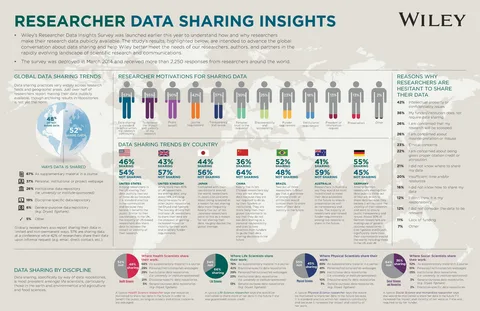In today’s data-driven world, businesses rely heavily on insights generated from data to gain a competitive edge. Data science has become a cornerstone for innovation, from powering recommendation engines and fraud detection systems to enabling real-time analytics for operational efficiency. However, mastering the complete journey from raw data to deploying a data-driven solution requires a structured approach, technical prowess, and strategic thinking. If you’re an aspiring professional looking to make an impact, enrolling in a Data Science Course can be your first step toward becoming a valuable asset in the digital economy.
This blog explores the lifecycle of a data science project—from understanding the business problem to deploying a machine learning model in a production environment.
- Understanding the Business Problem
Every successful data science project begins with a deep understanding of the problem you’re trying to solve. Defining the objective, whether it’s reducing customer churn, forecasting sales, or detecting anomalies, is essential. Data scientists must engage with stakeholders to grasp business requirements and KPIs (Key Performance Indicators). This phase lays the foundation for all subsequent tasks, as even the most sophisticated model is ineffective if it doesn’t align with business goals.
Key steps:
- Conduct stakeholder interviews.
- Define measurable outcomes.
- Translate the business problem into a data science problem.
- Data Collection and Integration
Once the problem is defined, the next step is gathering relevant data. This data might come from various sources, such as databases, cloud storage, APIs, or web scraping tools. Data scientists must assess the quality and availability of data while ensuring data privacy and compliance with regulations like GDPR.
Common sources:
- Internal systems (CRM, ERP, sales reports)
- Public datasets
- Social media APIs
- Web scraping tools
Tools and technologies:
- SQL for databases
- Python libraries like requests and BeautifulSoup
- Cloud platforms (AWS S3, Google BigQuery)
- Data Cleaning and Preprocessing
Raw data is rarely usable in its initial state. This phase involves removing duplicates, handling missing values, correcting inconsistencies, and converting data into the required format. It is often said that 70-80% of a data scientist’s time is spent on data cleaning.
Techniques involved:
- Inputting missing values using mean/median or predictive models
- Outlier detection
- Data transformation (normalisation, scaling, encoding categorical variables)
- Feature engineering to create new variables
Useful libraries:
- Pandas
- NumPy
- Scikit-learn
- Exploratory Data Analysis (EDA)
EDA is a crucial step that allows data scientists to understand the dataset’s patterns, trends, and relationships. Visualisation tools help identify anomalies, correlations, and potential variables for modelling.
EDA techniques:
- Descriptive statistics (mean, median, standard deviation)
- Correlation matrix
- Histograms, box plots, scatter plots
- Dimensionality reduction (PCA)
Popular tools:
- Matplotlib
- Seaborn
- Tableau or Power BI for interactive dashboards
- Model Building
This phase is where machine learning algorithms are applied to the prepared dataset. Data scientists choose appropriate models depending on the problem type (classification, regression, clustering). Evaluating multiple models and optimising their performance using tuning techniques is essential.
Steps:
- Split the data into training and testing sets.
- Select baseline models.
- Apply algorithms like Logistic Regression, Decision Trees, Random Forest, SVM, or Neural Networks.
- Hyperparameter tuning using GridSearchCV or RandomSearch.
Key metrics:
- Accuracy, Precision, Recall, F1-Score for classification
- RMSE, MAE for regression
- Model Evaluation and Validation
Before moving to deployment, the model’s performance must be rigorously tested to ensure it generalises well on unseen data. Techniques like cross-validation and bootstrapping help mitigate overfitting and improve the model’s reliability.
Validation strategies:
- K-Fold Cross Validation
- Stratified Sampling
- ROC Curve Analysis
- Confusion Matrix
At this point, revisiting the original business problem is crucial to ensure the model’s outputs are actionable and aligned with the business KPIs.
- Model Deployment
Deployment is integrating the trained model into a production environment where it can generate real-time or batch predictions. This step transforms your model from a prototype to a business solution.
Deployment strategies:
- REST APIs using Flask or FastAPI
- Cloud deployment on AWS, GCP, or Azure
- Model monitoring and logging using MLflow or Prometheus
- CI/CD pipelines for automation
Challenges:
- Ensuring scalability and speed
- Handling model drift
- Maintaining version control
- Monitoring and Maintenance
Even after deployment, the model’s job is not done. Continuous monitoring is essential to ensure the model maintains its accuracy over time. Real-world data evolves, and your model must evolve too.
Monitoring tasks:
- Track model performance metrics
- Retrain models periodically
- Implement feedback loops for performance improvement
- Ensure uptime and availability of APIs
Tools:
- Airflow for scheduling
- MLflow for lifecycle management
- Grafana for performance dashboards
- Collaboration and Communication
Collaboration between data scientists, engineers, domain experts, and business stakeholders is crucial throughout the project. Equally important is the ability to present complex insights in a simple, understandable way to non-technical audiences.
Tips for effective communication:
- Use storytelling techniques in presentations
- Translate results into business impact
- Visualise outcomes with dashboards and reports
- Share reproducible code and documentation
Final Thoughts
The journey from data to deployment is both challenging and rewarding. A successful data scientist excels at programming and mathematics and demonstrates business acumen and communication skills. As organisations increasingly recognise the value of data science, professionals who can deliver end-to-end solutions will be in high demand.
If you’re ready to dive into this dynamic and impactful field, enrolling in a data scientist course in Hyderabad can be a transformative step. With access to industry-relevant tools, real-world projects, and expert mentorship, you can develop the practical skills needed to manage the entire lifecycle of data science projects—from understanding raw data to deploying intelligent solutions that drive tangible business outcomes.
ExcelR – Data Science, Data Analytics and Business Analyst Course Training in Hyderabad
Address: Cyber Towers, PHASE-2, 5th Floor, Quadrant-2, HITEC City, Hyderabad, Telangana 500081
Phone: 096321 56744


